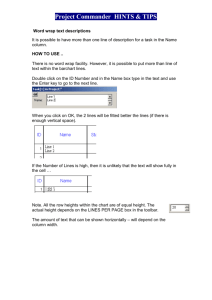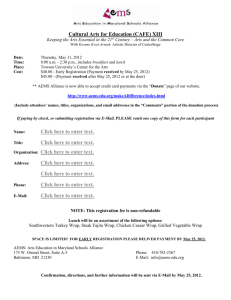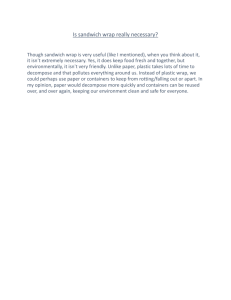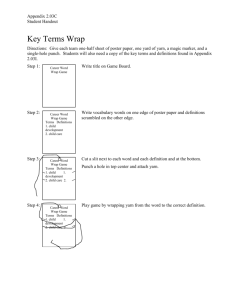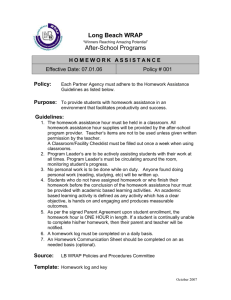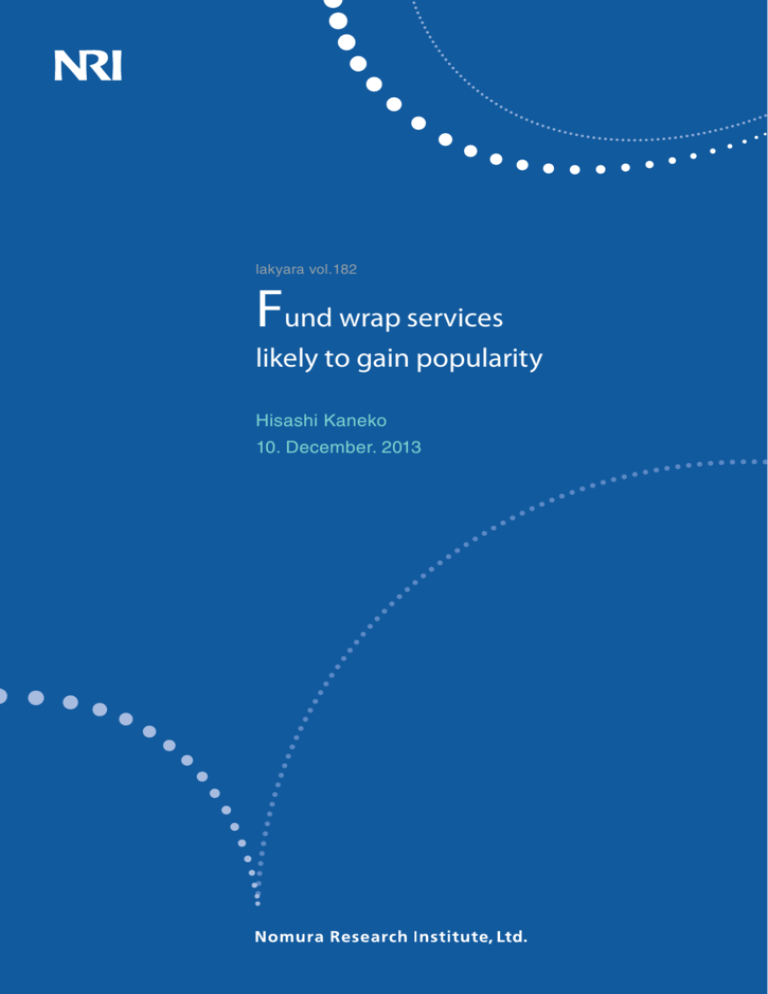
lakyara vol.182
Fund wrap services
likely to gain popularity
Hisashi Kaneko
10. December. 2013
Fund wrap services likely to gain popularity
vol.182
Executive Summary
Assets in fund wrap accounts are growing rapidly even as overall investment
trust AUM stagnate. Business models with AUM-based revenue streams like
the fund wrap model tend to be seen as less profitable than the conventional
investment trust sales model. In actuality, however, fund wrap services
compare favorably with conventional investment trust sales in terms of
Hisashi Kaneko
profitability. Additionally, fund wrap services mostly offer moderate-risk
Senior Researcher
products to customers who dislike making investment decisions themselves.
Financial Technology and
Market Research Department
They accordingly have a large pool of potential customers.
Although Japanese investment trust sales set an all-time semiannual record in the first
half of fiscal 2013, investment trust assets barely increased. While sales of open-end
equity investment trusts (ex ETFs) grew to ¥17.5 trillion in the first half, their assets
under management (AUM) grew a mere ¥420 billion (1%) from six months earlier as
sales growth was offset by increased redemptions. An exception to this general trend
was fund wrap services, which experienced rapid AUM growth.
What is a fund wrap?
A fund wrap is an asset management service that invests in investment trusts.
It is essentially equivalent to a wrap account or separately managed account.
Financial institutions that provide fund wrap services set investment goals in
consultation with the customer, determine individualized investment policies
(e.g., risk tolerance) and the amount to be invested to realize the customer's
goals, execute buy and sell orders, and administer the customer's account.
Additionally, they periodically report to customers about investment performance
and earn fees in proportion to AUM. Even in the regular investment trust sales
process, financial institutions provide advice to customers, but the customer is
the one who decides on the specific product in which to invest. With fund wrap
accounts, by contrast, the financial institution makes such decisions in accord
with investment policies determined through consultation with the customer.
In Japan, wrap accounts date back to April 2004, when the Investment Advisor
Business Act was amended to permit securities brokers and other financial
institutions to offer discretionary investment management services. After stagnating
in the aftermath of the global financial crisis, total wrap account AUM surpassed
©2013 Nomura Research Institute, Ltd. All Rights Reserved.
1
vol.182
Fund wrap services likely to gain popularity
Exhibit . Wrap account AUM
(¥bn)
1,200
1,000
800
600
400
200
0
'06/03
'07/03
'08/03
'09/03
'10/03
Fund wrap accounts
'11/03
Other
'12/03
'13/03
'13/09
Source: NRI, based on Japan Investment Advisers Association and Fundmark data
their previous peak (¥750 billion) in March 2013 and grew to over ¥1 trillion over
the following six months (see graph). The driving force behind this growth was fund
wrap services. Fund wrap services have experienced nearly uninterrupted AUM
growth since their inception. Their AUM doubled in the year through September
2013. As a result, fund wrap AUM now account for 80% of total wrap account AUM.
Because wrap accounts are an investment advisory service, they are offered by a
limited number of large and mid-sized brokerages and major commercial banks and
trust banks that have staff specializing in wrap account services. Additionally, even
fund wrap accounts, which have relatively low minimum investment requirements in
comparison to other wrap accounts, typically require a hefty minimum investment
of ¥5 million. There is consequently a general perception that most wrap account
customers are highly knowledgeable and experienced investors, but many financial
institutions are marketing fund wrap accounts as a service for people who want to
invest but are indecisive or unskilled at selecting specific investments.
Profitability compares favorably with traditional investment trust business
Fund wrap services do not charge commissions on investment trust purchases
and sales. Their fees are strictly a function of AUM. Fund wrap accounts typically
charge total annual fees of around 1.4% of AUM. This total is split roughly 50:50
NOTE
1) With performance-based fees, the
investment advisory fee rate is set at
one-third to one-half of the rate for
regular fund wrap accounts, plus 1020% of capital accretion attributable
to investment returns.
between administrative fees and investment advisory fees. In some cases, the
investment advisory fee is linked to performance. In such cases, customers are
charged a lower fee rate plus a percentage of any capital accretion attributable to
investment returns1) . Whichever fee arrangement is used, fund wrap providers also
collect account servicing fees from investment trust sponsors. Account servicing
©2013 Nomura Research Institute, Ltd. All Rights Reserved.
2
Fund wrap services likely to gain popularity
vol.182
fees for investment trusts available in fund wrap accounts average around 0.16%
2) T h e a d m i n i s t r a t i v e , i n v e s t m e n t
advisory, and account-servicing
fees are financial institutions'
compensation. In total, these fees
average 1.56% of AUM per annum.
per annum 2) , below the corresponding fee rate for investment trusts in general.
How do fund wrap accounts compare with the traditional investment trust business in
terms of fees earned as a percentage of AUM? A financial institution with ¥100 billion
of fund wrap AUM could earn ¥1.56 billion of annual fee revenues. In the traditional
investment trust business, fee revenues vary as a function of customers' average
holding period. Investment trusts' current average holding period has decreased to
about two years at present. Given a two-year holding period, a financial institution
with ¥100 billion of assets in conventional investment trust accounts would earn
annual revenues of ¥1.8 billion, modestly more than the corresponding revenues
3) In the conventional investment trust
business, investment trust distributors
earn average sales commissions of
2.6% and account servicing fees
of 0.5% per annum. Given that the
average investment trusts holding
period is roughly two years, investment
trust distributors would earn biennial
revenues of ¥3.6 billion (¥1.8 billion
per year) on ¥100 billion of investment
trust account balances.
4) For example, if the average investment
trusts holding period were three
years, financial institutions would earn
¥4.1 billion of revenues over three
years (¥1.37 billion per year) from
the conventional investment trust
business.
from fund wrap accounts3) . If the average holding period lengthens, the difference
in revenues between the conventional investment trust business and fund wrap
accounts would progressively shrink. Once the average holding period exceeds 2.5
years, financial institutions would earn higher revenues from fund wrap accounts than
from the conventional investment trust business4) . Fund wrap services' profitability
thus compares favorably with that of the conventional investment trust business .
Large pool of potential customers
Investment trust that can be held in fund wrap accounts include not only equity, bond
and REIT funds but also funds not widely available through conventional investment
trust sales channels, such as commodity funds and hedge funds. This fact may convey
the impression that fund wrap customers are mostly investors pursuing higher-risk,
higher-return opportunities than those available from conventional investment trust
sales channels, but in actuality the opposite is true. This is evident from just analyzing
investment trusts available exclusively for fund wrap accounts. The (AUM-weighted)
average annualized volatility of investment trusts that financial institutions offer to
fund wrap customers is generally 9-12%. The average volatility of actual portfolios
held in fund wrap accounts is presumably even lower by virtue of the covariance
effect. Fund wrap account portfolios' average volatility is likely far lower than the
5) Calculated by the same methodology,
open-end equity investment trusts'
average annualized volatility was
18.0%.
average volatility of investment trusts sold through conventional sales channels 5) .
This could imply that the pool of investors amenable to utilizing fund wrap accounts
is large. According to NRI surveys, people interested in investing have a strong
tendency to have a conservative investment approach. Most people's risk tolerance
6) See Exhibit 22 on page 17 of Japan's
Asset Management Business 2012/13
(NRI): http://www.nri.com/global/
opinion/jamb/JAMB2012.pdf.
is moderate at best6) . Since the global financial crisis, a small number of relatively
highly risk-tolerant investors capable of making their own investment decisions
have accounted for the bulk of investment trust purchasers. Although prospective
fund wrap customers are limited to people with at least ¥5 million of investable
©2013 Nomura Research Institute, Ltd. All Rights Reserved.
3
Fund wrap services likely to gain popularity
vol.182
capital, investors with relatively low risk tolerances and an aversion to making
investment decisions constitute a large pool of potential fund wrap customers.
Many financial institutions are seeking to switch to business models that generate
revenues based on asset balances. Such business models are less conducive
to conflicts of interest with customers, as regulatory authorities have repeatedly
emphasized. Growth in fund wrap services may prompt financial institutions to shift
more toward AUM-based fee structures.
©2013 Nomura Research Institute, Ltd. All Rights Reserved.
4
Fund wrap services likely to gain popularity
vol.182
about NRI
Nomura Research Institute, Ltd. (“NRI”, TYO: 4307) is an independent, global IT
solutions and consulting services provider with annual sales of 363.9 billion yen
as of FY ended March 2013. With front-to-back support for the buy- and sellside, NRI’s tradition of innovation has positioned them as a trusted international
market leader. Leveraging NRI’s global consulting business, NRI is able to provide
innovative financial IT solutions for investment banks, asset managers, banks and
insurance providers. For more information, visit www.nri.com.
The entire content of this report is subject to copyright with all rights reserved.
The report is provided solely for informational purposes for our UK and USA readers and is not to be construed as
providing advice, recommendations, endorsements, representations or warranties of any kind whatsoever.
Whilst every effort has been taken to ensure the accuracy of the information, NRI shall have no liability for any loss or
damage arising directly or indirectly from the use of the information contained in this report.
Reproduction in whole or in part use for any public purpose is permitted only with the prior written approval of Nomura
Research Institute, Ltd.
Inquiries to :Financial Technology and Market Research Department
Nomura Research Institute, Ltd.
Marunouchi Kitaguchi Bldg.
1-6-5 Marunouchi, Chiyoda-ku, Tokyo 100-0005, Japan
E-mail : kyara@nri.co.jp
http://www.nri.com/global/opinion/lakyara/index
©2013 Nomura Research Institute, Ltd. All Rights Reserved.
5


